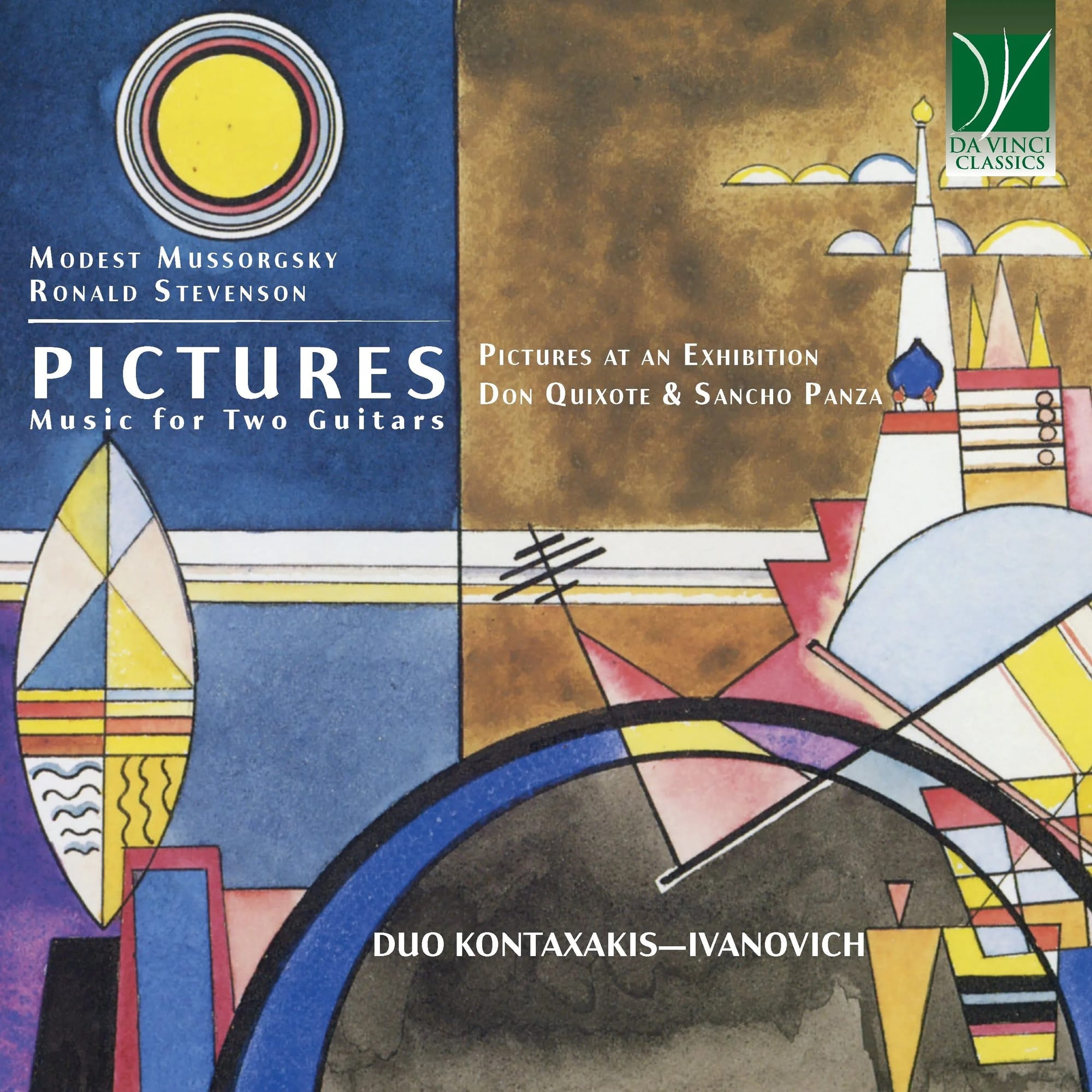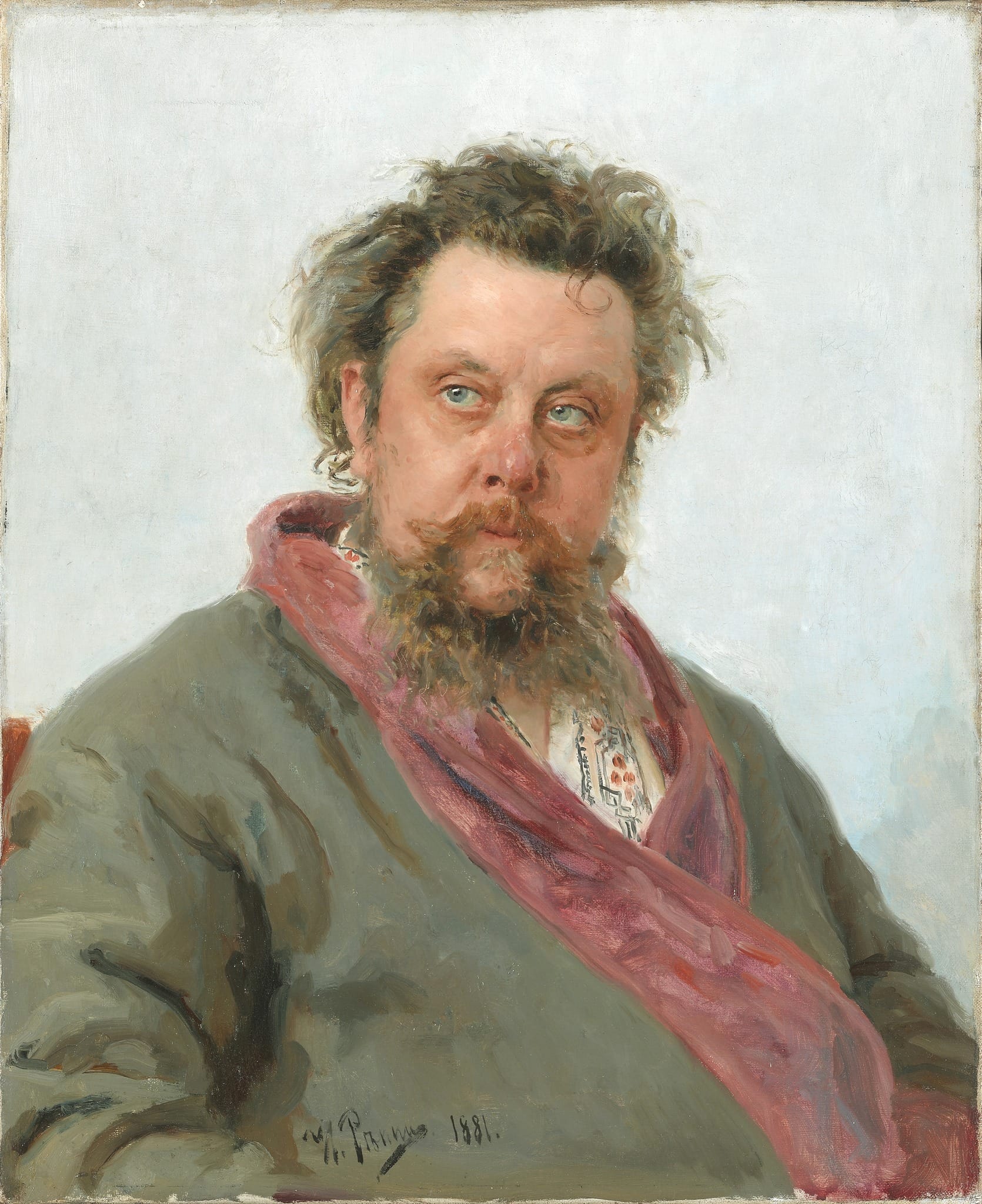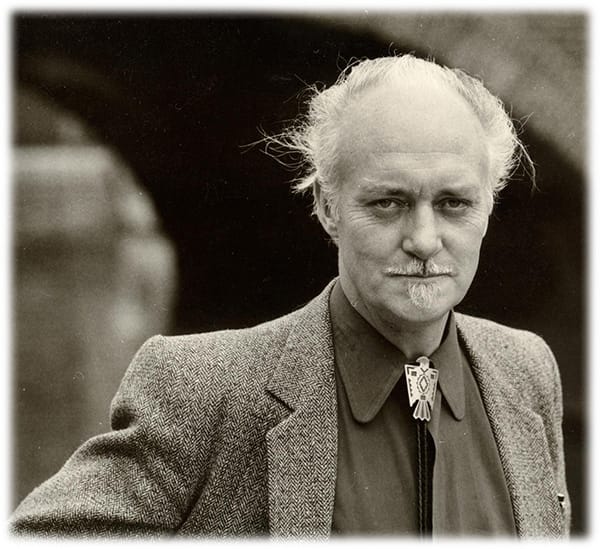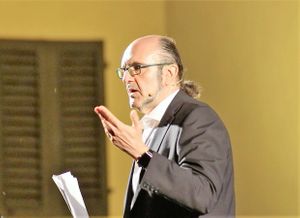If there is a composer in the Western art-music world whose genius has had to contend constantly with the reception and acceptance of his works—sometimes arduous, sometimes misunderstood, sometimes wholly uncomprehended—it is none other than the great Modest Mussorgsky. As so often happens when one is too far ahead of one’s time, he still pays the price of the trite renown accorded to age-old pieces such as Pictures at an Exhibition or Night on Bald Mountain, the fame of an extraordinary and revolutionary masterpiece like Boris Godunov (one of those works that is endlessly cited but seldom heard), and the near-total indifference—especially in our part of the world—toward that magnificent treasure trove represented by his song cycles for voice and piano: the formidable triptych The Children’s Room, Without Sun, and Songs and Dances of Death (hindered, alas, by the very hostility of the Russian language, which hardly encourages the indolent or those afflicted by Oblomovism, if we are to remain within that country’s cultural sphere).

Furthermore, paradoxically, Mussorgsky’s music suffers, in a sense, from faults that aren’t his own but sprang—albeit unintentionally—from others: from the various tamperings and arbitrary modifications Rimsky-Korsakov made to his scores, to the hyper-vitamin boost Ravel gave the ever-present Pictures at an Exhibition in his orchestral transcription. While on one hand this allowed the work to be discovered and broadcast Urbis et Orbis to the masses, on the other it misrepresented and distorted its original scope—capable of projecting a musical visionariness rare in the realm of sound art.
I know I’ll spark outrage among legions of aficionados and prim ladies alike, but the French composer’s version is, so to speak, a Technicolor sound-track on a widescreen format—perfect for fans of the special-effects spectacle so beloved by the Marvel Cinematic Universe. In short, it’s for people who see cinema as mere entertainment, just as they listen to music to appreciate, but not to understand. Fortunately for those of us who listen to comprehend and not merely to admire (and, if I may court a few more enemies, I include the famed 1971 transcription by Emerson, Lake & Palmer here), other versions exist. Beyond peculiar experiments—like Noriko Ishikawa’s arrangement for two pianos, twelve hands, and percussion ensemble (sic)—there are transcriptions that do precisely what they should: use other instruments—ideally few—to highlight the genius of the Russian composer’s writing, not melodically, but harmonically.
I say this because it is through the study, the deep dive, and the exploitation of harmony (the Prelude to Boris Godunov, in this respect, is exemplary) that the true Modest Mussorgsky emerges. A judicious transcription of his Pictures at an Exhibition—such as the solo-organ version—lets all the hidden harmonic complexity within its surface.

Now the transcription recently recorded for Da Vinci Classics by the guitar duo of Croatian Dejan Ivanovich and Greek Michalis Kontaxakis—together with another work, the bagatelle cycle Don Quixote & Sancho Panza by contemporary Scottish composer Ronald Stevenson—can also be counted among the focused and intelligent renderings of this masterpiece.
The importance of this transcription lies, beyond the duo’s interpretive expertise, in the very way Mussorgsky built a marvellous sonic edifice on the principle of complex minimalism, unfolding a musical world rich in nuance and balanced contrasts. To appreciate this, you don’t need a massive orchestra with powerhouse sections unleashing tons of timbral weight, but—in this case—just two guitars: the first carrying the melodic line, the second reinforcing the bass.
This not only conveys the brilliance of the compositional material but also suggests a sense of “classicism” with an almost Baroque flavour, revealing how Mussorgsky managed to erect this sonic edifice with proper measurements and correct proportions. Such a foundation is indispensable for allowing the listener to “visualize” the acoustic effect of the pictures portrayed—through rhythm, timbre, and melodic contributions that each time offer the vanishing point from which to admire the scene unfolding before the ear (I point in particular to Bydlo and, above all, The Ballet of the Unhatched Chicks, the latter a piece of considerable technical difficulty on a stringed instrument, although I believe the most effective result occurs in the dialogic interplay of Samuel Goldenberg & Schmuÿle).

After repeated listenings, I could only agree with Fabio Zanon—who wrote the disc’s accompanying notes—that the performers on this recording devoted several years to crafting this two-guitar transcription, experimenting with various bass tunings to preserve the depth of the original lower register and its full effect. In fact, it’s clear that this meticulous, gradual refinement was undertaken to achieve the most appropriate timbre for each movement, leveraging the expressive capacities of the guitar and, precisely, avoiding the now-misguided path of Ravel’s orchestration.
Ronald Stevenson’s own composition—Stevenson, the Scottish composer who passed away in 2015 at the age of eighty-seven—has its own merits and distinctive features, even if it’s immediately clear that the task facing the two guitarists was considerably simpler. After all, this is music “tailor-made” for their instruments. The cycle comprises seventeen interlinked descriptive movements that translate the most representative episodes of Cervantes’s literary masterpiece into sound, written between 1982 and 1985. Here the compositional dimension never becomes subservient to the narrative image. It’s undoubtedly an interesting work—though it cannot claim Mussorgsky’s level of genius—and the Ivanovich & Kontaxakis duo renders it with genuine engagement and conviction. Note, in particular, the pure melodic line of the Serenade of Don Quixote.

The recording’s sound capture by Michalis Kontaxakis in the Orthodox Church of St. John in Athens is also of high quality. Its dynamics are energetic, fast, and natural, which brings out the micro-dynamics essential for appreciating the myriad timbral nuances voiced by the two guitars—nuances sculpted by engineer Alkis Efthymiadis. The spatial reconstruction of the soundstage is remarkable: the instruments are placed closely together without any distracting reverberation, and the tone radiates pleasingly in both height and breadth. Tonal balance is the most delicate yet most convincing parameter here, as both guitars’ registers remain perfectly audible and well-defined in their mid-low and high ranges. Finally, the level of detail delivers more than sufficient material presence, conveying a tactile sense of both instruments.
Andrea Bedetti
Modest Mussorgsky – Ronald Stevenson · Pictures. Music for Two Guitars
Duo Kontaxakis-Ivanovich
CD Da Vinci Classics C01041
Artistic rating 4,5/5
Technical rating 4/5




